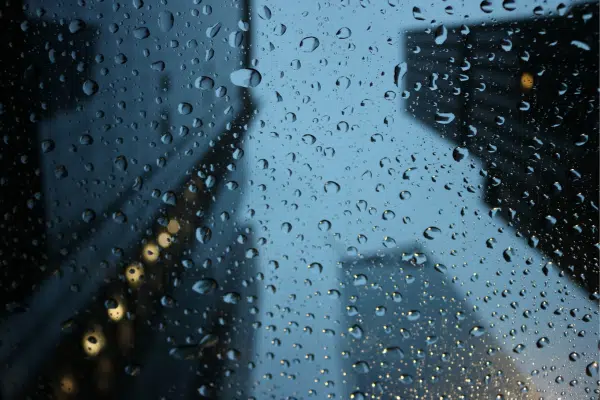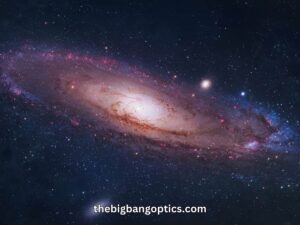How To Stop Condensation On Telescope; 5-Minute Read
Disclosure: This post contains affiliate links and I may earn a small commission (at no extra cost to you) if you click through and make a purchase. Thanks in advance – I really appreciate it!
I learned in school that although we can’t see it, the air around us contains lots of water in the form of vapor. Then very soon I encountered this mysterious water in the air on my very first night of stargazing when it started misting my telescope’s lenses. Since then, I have found many ways to tackle this night-time menace that can be quite frustrating for us, amateur astronomers.
Key Takeaways:
How to stop condensation on a telescope?
Condensation on the telescope can be prevented by keeping the optical surfaces warm by using either a dew heater or a dew shield. You may also wrap the telescope in a Mylar space blanket, or use a hairdryer on low heat to keep the telescope warm. A desk fan can also be used to stop dew formation.
In this article, I will give you insider knowledge on effective countermeasures that you can take against dew spoiling your night of stargazing. We will discuss dew heaters, dew shields, desk fans, and other innovative ways to prevent your optics from dewing up. Read on to find out more.
How To Prevent Dew On a Telescope?
Dew can have all kinds of negative effects on not just the views through your telescope but even on the overall functionality of the telescope.
Dew can obviously cause frustration by dimming the view and eliminating vital contrast from the images, but water from the condensation can also make its way to the telescope’s mount and cause it to rust.
Accessories To Prevent Condensation On Telescope
Below are the various accessories that I generally use to prevent dew on my telescope. I have explained each one of them later in the article. Clicking on the below items will take you to Amazon where you can purchase them.
Dew Heater:
Dew Shield:
To Cover Your Telescope:
Before we learn how to stop dew forming on a telescope, we need to learn a bit about our enemy – the dew and the dew point.
What is Dew?
Dew is the moisture that forms as a result of condensation. Condensation is the process when a material undergoes as it changes from a gas to a liquid. Dew is the result of water changing from a vapor to a liquid.
Dew forms as temperatures drop and your telescope cools down. If the telescope becomes cool enough, the air around it will also cool. Colder air is less able to hold water vapor than warm air.
This forces water vapor in the air around the telescope to condense on it. When condensation happens, small water droplets form dew and settle on your telescope and its optics.
The telescope’s lenses or mirrors are better thermal conductors than air, causing heat to be removed when the air makes contact with the lens. This will transform water vapor in the air into tiny droplets of water which will then fog up the lens.
What is Dew Point?
The dew point is the temperature at which air is saturated with water vapor, which is the gaseous state of water.
When the air has reached the dew-point temperature at a particular pressure, the water vapor in the air is in equilibrium with liquid water, meaning water vapor is condensing at the same rate at which liquid water is evaporating.
Below the dew point, liquid water will begin to condense on solid surfaces such as lenses and mirrors of your telescope.
However, it is still possible for dew to form on your telescope when the ambient air temperature is above the dew point. The reason for this is something called the ‘chilling effect’.
Parts of your equipment can be quite a bit colder than the air, if they are colder than the current dew point, they will cause water to be lost from the surrounding air and deposited as droplets of dew.

Why Does Dew Form On The Telescope?
Dew only forms on the telescope when the telescope’s optics are colder than the surrounding air’s dew point.
At the dew point, the air is saturated with water vapor and when it comes in contact with a surface that is colder than the air’s dew point, the water vapor turns into water and starts condensing on the telescope and its optics.
When you take out a can of soda from the refrigerator, it is generally colder than the ambient air around it and that is why you see water condensing on it.
This just means that the soda can is colder than the air’s dew point, hence water vapor (gas) turns into water (liquid) and condenses on the surface of the can. Your telescope is the can of soda in this example.
When you take out the telescope from the warmth of your home, it begins radiating away heat directly into outer space, which is only a few degrees above absolute zero.
As soon as the telescope becomes a few degrees colder than the surrounding air, the water present in the air begins to condense on the telescope surfaces and fogs up the mirrors and lenses.
So, to stop condensation or dew on your telescope, you just need to keep it above the air’s dew point – I am not saying that it has to be warm to the touch. But as long as your telescope remains even a few degrees above ambient temperature, it will remain dew-free.
What Can I Use To Stop Dew On Telescope
To avoid dew buildup on your telescope, I highly recommend storing it in a warm, dry room. Dew will begin forming when your telescope’s optics reaches the same temperature as the dew point. You can lengthen the amount of time it takes for your telescope to reach this temperature by keeping the optics warm before taking it outside.
You can also use one or more of the below accessories to keep your equipment free from any condensation.
Here are the best ways to ensure that your telescope stays warm and remains free from dew for a long night of observing.
Dew Shield
Dew shields are metal or plastic extensions to a telescope’s optical tube. They serve two functions; to stop stray light from entering the light path from oblique angles and to help keep dew at bay.
Protecting your optics from as much exposure to the night sky as possible is the first line of defense against dew. The typical dew shield that extends beyond the lens of a refractor is often enough to keep the lens dry.
A dew shield traps a pocket of air in front of the lens, helping to control the rate of this radiation and prevent dew from building up.
As a general rule of thumb, the dew shield should be 1.5 times the size of your telescope’s aperture. So if you own an 8” (203mm) telescope, you will need a dew shield that is at least 12” or 305mm long.
I would also like to point out that a longer dew shield will prevent light from entering the telescope which can spoil the image quality and make observing the target a bit difficult. So, make sure that your dew shield is only so long that it doesn’t block the light from entering the optical tube.
Although dew shields can help you extend your observing session by a few hours, they aren’t all that effective, especially on bad nights.
To observe the night sky, we have to point our telescopes to the sky, and dew shields can not prevent dew from forming directly above the lens. This is where dew heaters are much more effective.
Considering their affordability, I highly recommend buying a dew shield as they can prove to be a good investment for cold nights.
Astromania Flexible Dew Shield is the one that I use and has served me well by keeping the dew away on my long nights of stargazing.
Dew Heaters
A dew heater is the best method to prevent dew from building on your telescope’s optics. A dew heater works by placing a heated strip around the parameter of your telescope. This ensures that the telescope optics stay above the air’s dew point for the entire duration of your viewing session.
The dew heater can be powered on its own, but ideally, you should use a dew heater controller that can adjust the amount of heat generated by the heater strap.
When connected to a dew controller, the gentle heat percolates inside the telescope which keeps the lenses and mirrors of the telescope free from any condensation or dew for as long as your session lasts
Dew heaters gently heat the telescope that keeps it close to the temperature of the surrounding air, minimizing poor viewing which is caused by air-temperature differences near your optics. So a dew heater consistently does a great at keeping the telescope from growing colder than the air which prevents any dew formation.
The Orion Dew Zapper Pro is an advanced 12-volt DC dew prevention and elimination system which can power up to four heating bands to prevent dew accumulation on all your optics.
I have been using this channel for a few months and I can assure you that it works great at keeping the dew away!
If you’re a beginner and looking for a budget-friendly option then I can recommend SVBONY Dew Heater Strip. This is a high-output model suitable for cold and highly humid environments. It has been tested for its effectiveness against condensation outdoors in winters when the temperature drops below 32 F.
Covering Your Telescope To Prevent Due Formation
To keep the telescope warm and prevent the heat from radiating into the cold night, you may consider wrapping finderscope, dew shield, and the body of your telescope in an aluminum radiator foil or a Mylar space blanket.
Both of these are extremely good at keeping the exposed parts of the telescope to stay closer to ambient temperature and prevent the formation of any condensation on the lenses and mirrors.
Hairdryer – NOT RECOMMENDED
If you don’t have a dew shield or a dew heater yet and your observing sessions are suffering because of severe dew formation on your optics, then you may use a small hairdryer intermittently to blow warm air on your telescope to keep it warm above the dew point.
There are too many drawbacks to using a hairdryer to keep your telescope warm.
First, even a small hairdryer blowing heat on the lowest level will require a large amount of power which will quickly drain out your batteries.
Moreover, it’s not feasible to carry that kind of a power source to an observing sight just to power a hairdryer.
Secondly, a hairdryer may blow dirt and debris on your telescope’s lenses and mirrors which may negatively affect the proper viewing of the night sky.
Also, using a hairdryer is not a very effective method as the dew eventually returns without a consistent source of heat on your optics.
However, if you do decide to use a hairdryer to prevent dew formation on your telescope, make sure that you use it intermittently and gently from a distance so it doesn’t overheat the glass and warp it.
Also, use the hairdryer on its lowest heat setting and blow the air horizontally across the corrector plate rather than directly onto it.
Using a Fan To Keep The Dew Away
To keep the dew away from your telescope you must make sure that the air around your telescope keeps flowing. A medium-sized desk fan is a great way to make sure that there is a constant airflow going around your equipment which helps in keeping the air around it at a favorable temperature that stops the dew formation.
How To Make a Dew Shield For Your Telescope
If you need a dew shield immediately, it’s quite easy to make one by yourself. I found a video on YouTube that can help you make a dew shield at home.
How To Store A Telescope To Prevent Condensation
Nothing affects a telescope’s life span more than how and where you store it when you’re not using it.
A good storage place should be dry, dust-free, secure, and large enough to get the telescope in and out easily.
Ideally, you should keep your telescope at or near the temperature outside. Doing so reduces the cooling (or warming) time required when you set up at night.
Make sure that you don’t shut your telescope in an airtight case right after a night of viewing.
It’s not a good idea to store a telescope in a box until it has completely dried. Water that has nowhere to go could eat away at optical coatings and eventually damage the lenses and mirrors of your telescope.
Moreover, a dark, damp telescope tube is the perfect breeding ground for mold and mildew. To avoid the risk of your scope becoming a petri dish, be sure all of its parts are dry before you store it.
Tilt the tube horizontally to ensure that no water puddles on the lens, mirror, or corrector plate.
Allow the scope to warm up once it is brought inside.
Uncover all optics and let the tube and tripod sit in the open.
Moisture (dewing and condensation) will evaporate off the scope, and it can then be safely stored.
The best way to store a telescope is to cover it with a cloth. It keeps dust off while letting water vapor out.
You may keep a low-powered (4-watt) lightbulb below or next to the objective lens. It doesn’t cost a lot to keep a 4-watt lightbulb running throughout the damp season if it guarantees your telescope’s safety from moisture.
Written by:

Kavya Joshi
My love affair with space began in a field in India at the age of 7, when I looked up at the Milky Way for the first time. Ever since, I have been attempting to cram in every fact about the Universe, I can find into my head.
ABOUT US
We are a team of active amateur astronomers, here to help you with all your astronomy and science related needs – this is anything, from reviewing the latest telescopes to be released to talking about gravity and neurons. The Big Bang Optics was started because of our love for astronomy and to help others like us find the best telescope and accessories.
LEGAL DISCLAIMER
The Big Bang Optics is a participant in the Amazon Services LLC Associates Program, an affiliate advertising program designed to provide a means for sites to earn advertising fees by advertising and linking to Amazon.com. The Big Bang Optics also participates in affiliate programs with Clickbank and other sites. The Big Bang Optics is compensated for referring traffic and business to these companies.




